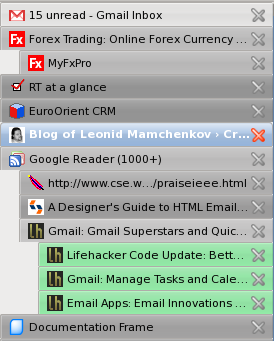Check out this poll for media-related features for the upcoming WordPress 2.9. This is your chance to influence the priorities. Features on the menu are:
- Additional Media Filters, which would help you pick media that was used recently, or more often, or is your favourite, etc. I don’t find it very important for my usage scenarios, because I rarely re-use media files in other posts.
- Basic Image Editing, which will allow things like crop, rotate, and resize. Even though I can use standalone image editors, I know of quite a few non-technical people who would appreciate basic image controls.
- Better Media Settings, which will provide more defaults and more options to change for each upload. I have enough options for my media usage already, so I don’t find this to be of high importance.
- Bulk Media Import API, which will be appreciated by web development companies and such. Anything that helps automation and bulk processing is A Good Thing. Also, with more attention to media functionality in WordPress, I suspect some people would prefer to host their own images and videos, rather than to use third-party services (YouTube, Flickr, and such). Moving all that content into WordPress with API is a dream come true.
- Custom Image Sizes, which will allow for more and truly customized image sizes. While I can understand the importance of this for some people, I suspect that most are satisfied with what is there now. Plus there is a range of plugins, and workarounds available that make this problem of less importance.
- Easier Embeds, for content coming from third-party services like Flickr, YouTube, and such. This is something I’d really love to see done. Currently, there are plugins to cover most cases, but I believe a built-in way is in order. Plus plugins often miss important parts of the site, such as feeds. And plugins rarely work well with other plugins. If this functionality is in the core, or in a plugin, which is a part of main download, extending and re-using such functionality would be easier.
- Media albums, as in standalone galleries, rather than media galleries attached to a post. That’s something that a lot of people would find useful. For example, bringing all YouTube videos from all your posts into a single gallery would be awesome.
- Media metadata, which is adding categories and tags to media files. Well, while it sounds cool, I think it will add more confusion to people. With such functionality, WordPress will become more of a generic content management system. For example, together with media albums, you’d be able to use WordPress as a pure image gallery application.
- Post thumbnails, which would associate an image with your post. I think this functionality is only useful to a small bunch of people, and it is currently available via plugins. I don’t think it’s worth putting it in the core.
- Revised Media User Interface, which would improve the experience in the media editor. I don’t know how many people find it difficult to use actually, because it works like a charm for me, and I find it easy to explain to non-technical users as well. But if there are ideas on how it could be much improved, then why not.
If you have any opinions on the above, please vote in the poll first, and then share them in the comments second.

